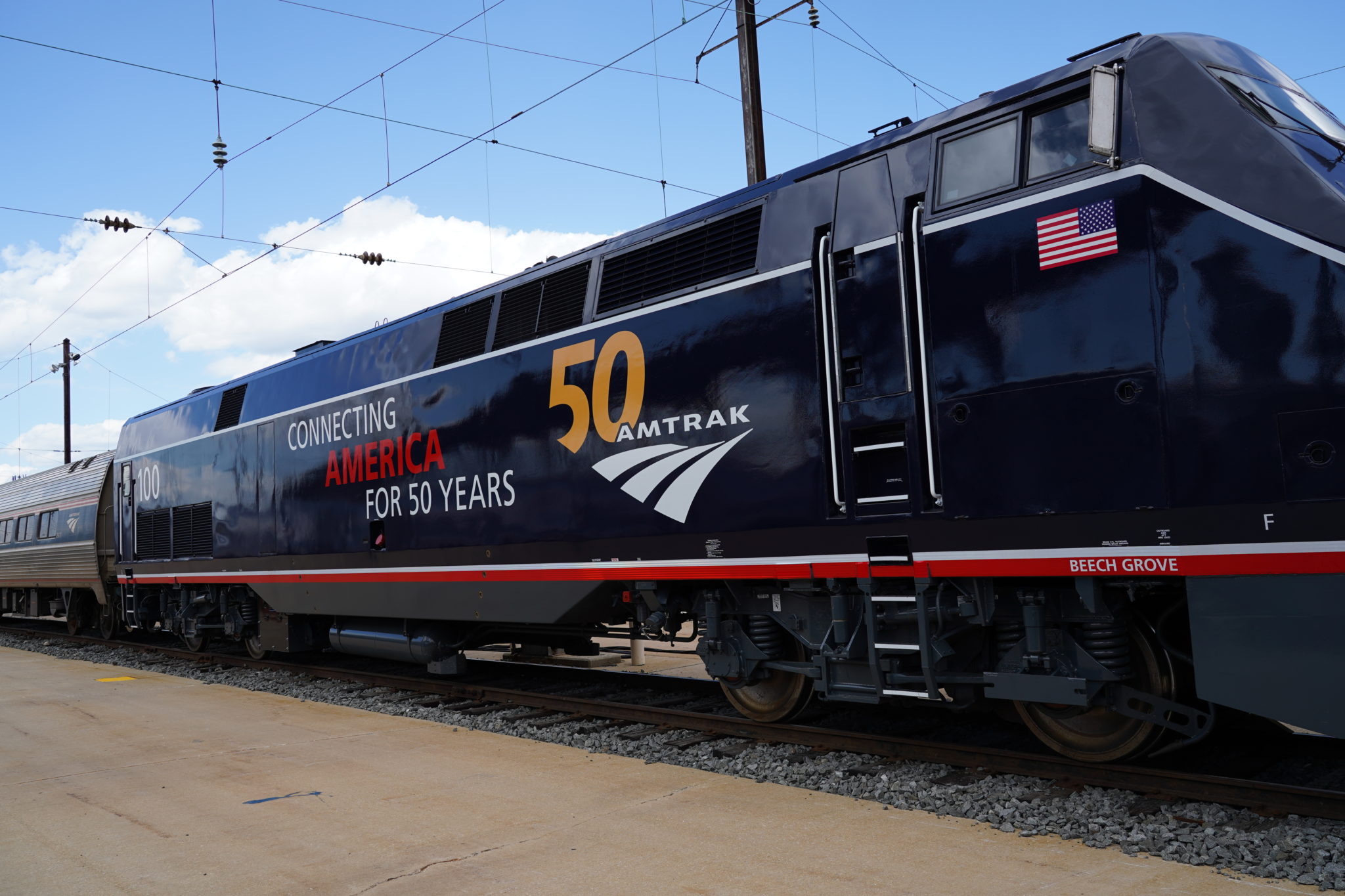Amtrak is all aboard the Texas Triangle, but there is a long way to go before more trains roll into Houston, headed for San Antonio and Dallas.
The national rail system’s new plan for expanding service, released Thursday, identifies potential routes to create or expand nationwide by 2035. The Texas Triangle, involving Houston, Dallas and San Antonio — and including Austin and Fort Worth — receives significant attention. Three daily round-trip trains are planned between Houston and Dallas, in addition to three between Houston and San Antonio.
For Houston travelers, Austin would be accessible via San Antonio.
Amtrak also identified potential stops along the routes where new passenger stations could be added, including Rosenberg on the way to San Antonio and College Station on the way to Dallas.
[…]
Amtrak trains along the Sunset Limited roll into Houston three days a week. As a result, use of the Houston Amtrak station — often mocked for being a single platform for the nation’s fifth-largest metro area — is low. In 2017, fewer than 20,000 people boarded Amtrak in Houston, a yearly total that is less than hopped aboard Metropolitan Transit Authority’s Red Line light rail on the typical workday.
The last time the Houston Amtrak station saw a large crowd, it was to welcome the world’s largest steam train, during a 2019 stop by Union Pacific.
Many argue that is because Amtrak trains to and from Houston only come every other day and often not on time. The Northeast corridor, where Amtrak is a common way to move between cities, offers more than 100 weekday trains.
That is in part because of the dominance of Amtrak in owning railroad tracks in the Northeast, compared with the rest of the nation, where most major lines are controlled by freight railroads. In many cases, including Texas, adding the service is likely to come with federal investment in projects aimed at improving reliability or speed of service.
Even then, with various stops, the trains would lag behind air travel or most car trips. Both Houston-to-Dallas and Houston-to-San Antonio would take more than 4½ hours.
The appeal is a more predictable trip than driving, with fewer hassles than air travel, said James Llamas, a principal planner at Houston-based Traffic Engineers Inc. Llamas, who recreationally and professionally travels by train often, said that where Amtrak or officials have invested in frequent train service, riders have embraced it. He noted investments in California, which historically suffered from a lack of passenger rail options until the state opted to develop them, have increased ridership to where it is the most-used lines in Amtrak outside the Northeast.
Though Amtrak can seek federal funding to start service, it is likely Texas would have to support the service or agree to some funding to continue it beyond the first few years. Texas has supported rail lines in the Dallas area but has not made any commitments to Houston services.
Increased train service also is likely to change if a planned high-speed rail line between Houston and Dallas happens. Texas Central Railroad continues development of its proposed 220-mile line between the metro areas, though the plan continues to face stiff opposition.
This has come up before, as part of the Infrastructure Not-Yet-A-Bill discussion. You can see the national rail line map Amtrak proposed at that time, which includes the Houston/Dallas/San Antonio triangle. I’m all in favor of more passenger rail service in Texas, but I don’t know how competitive this would be versus Texas Central and its high speed option, which if things go as they have planned would be up and running well before a Houston-Dallas Amtrak train would be. There have also been other high speed rail lines proposed, which would cover more of Texas than what is currently planned for Texas Central, but at this point I think we can consider them to be vaporware, at least until and unless something tangible gets put forward.
If Amtrak can get up and running in between Austin and San Antonio, that would serve as a version of the long-song Lone Star Rail line. Note that the issue there has long been availability of the existing freight rail tracks – without being able to share them, new track would have to be built, which is far more expensive and time-consuming and runs into the same kind of eminent domain issues that Texas Central has had to deal with (though one presumes that no one would get any traction claiming that Amtrak is not really a railroad). All of this is to say that while the idea is sound, there are many obstacles. I would sadly bet against anything like this being fully operational by 2035, assuming we’re all still here to see for ourselves.


Too bad that the rail right of way from Houston west got paved over when the Katy FWY was widened a few years ago.
Was the auto dealers’ lobby responsible for that?